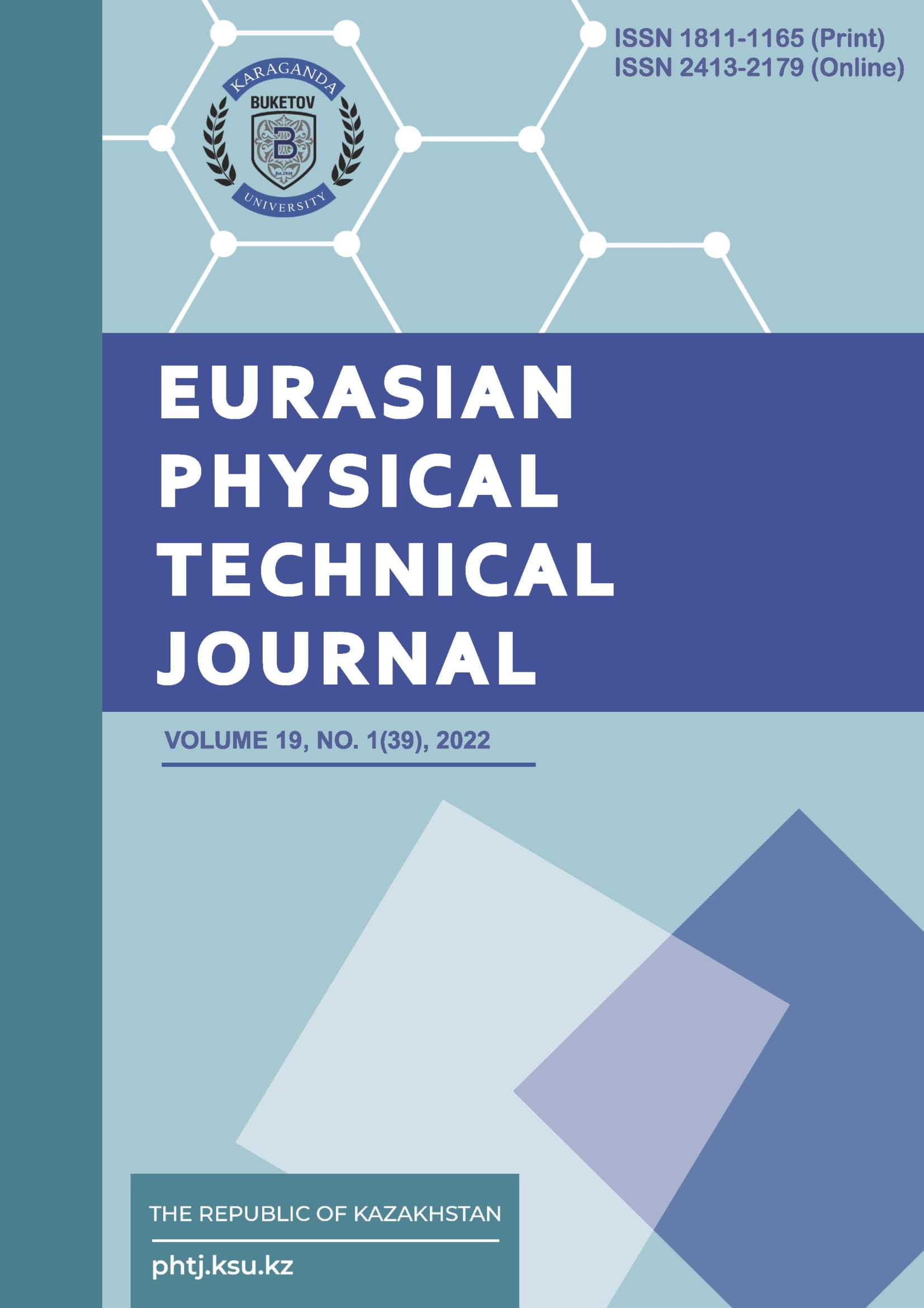METAL-INSULATOR TRANSITIONS IN DOPED La-BASED SUPER CONDUCTORS WITH SMALL-RADIUS DOPANTS
DOI:
https://doi.org/10.31489/2022No1/15-19Keywords:
Hole-doped cuprates; Carrier localization; Metal-insulator transitions.Abstract
In this work, we study the possibility of realizing two distinct mechanisms of metal-insulator transitions in hole-doped cuprates induced by the localization of charge carriers near the small-radius impurities and in a deformable lattice (i.e. in the absence of impurities). The purpose of this research is to determine the criteria (i.e. conditions) for the existence of the localized states of hole carriers and solve the problem of metal-insulator transitions in La-based cuprates. The advantage of La-based cuprate versus other types of cuprates is that two distinct metal-insulator transitions in La-based cuprates driven by the strong carrier-impurity-phonon and carrier-phonon interactions occur simultaneously in a wider doping range from the lightly doped to heavily doping regime. We show that at very low doping, the separate levels of hole carriers localized near impurities and in a deformable lattice are formed in the charge-transfer gap of the cuprates. As the doping level increases towards underdoped region, the energy levels of such charge carriers start to form energy bands which gradually broaden with increasing doping. We propose a new two-carrier cuprate superconductor model for studying two distinct metal-insulator transitions occurring simultaneously in hole-doped La-based cuprate compounds. We demonstrate that when hole carriers reside in impurity and polaron bands, these metal-insulator transitions in La-based superconductors with small-radius dopants occur accordingly in a wide doping range and relatively lower doping levels.
References
"1. Mott N. F. The Basis of the Electron Theory of Metals, with Special Reference to the Transition Metals. Proc. Phys. Soc. London. 1949, Vol. A62, pp. 416 - 422.
Hubbard J. Electron correlations in narrow energy bands. II. The degenerate band case. Proc. Roy. Soc. London. 1964, Vol. A277, pp. 237-259; Electron correlations in narrow energy bands. III. An improved solution. Proc. Roy. Soc. London. 1964, Vol. A281, pp. 401-419.
Mott N.F. Metal-Insulator Transitions. Taylor and Francis, London, 1990, 286 p.
Lavrov A.N., Gantmakher V.F. Low-temperature resistivity of under doped cuprates. Phys. Usp. 1998, Vol.41, pp. 223-226.
Abrikosov A.A. Resonant tunneling in high-Tc superconductors. Phys.Usp. 1998, Vol.41, pp. 605-616.
Imada M., Fujimory A., Tokura Y. Metal-insulator transitions. Rev. Mod. Phys. 1998, Vol. 70, pp. 1039-1263.
Walz F. The Vervey transition- a topical review. J. Phys.: Condens. Matter.2002, Vol.14, pp. R285-R340.
Vedeneev S.I. High temperature superconductors in strong and superstrong magnetic fields. Usp. Fiz. Nauk, 2012, Vol.182, pp.669-676.
Dzhumanov S. Theory of Conventional and Unconventional Superconductivity in the High-Tc Cuprates and Other Systems. Nova Science Publishers, New York, 2013, 356 p.
Dzhumanov S., et al. Formation of intermediate coupling optical polarons and bipolarons. Phys. Lett. A. 2019, Vol. 383, pp.1330-1335.
Wilson A. H. The theory of Electronic Semi-Conductors. Proc. Roy. Soc. London. 1931, Vol. A133, pp. 458-491; The theory of electronic semi-conductors. II. Proc. Roy. Soc. London, 1931, Vol. A134, pp. 277-287.
Anderson P.W. Absence of Diffusion in Certain Random Lattices. Phys. Rev.1958, Vol. 109, pp. 1492-1505.
Damascelli A., Hussain Z., Shen Z.X. Angle-resolved photoemission studies of the cuprate superconductors. Rev. Mod. Phys. 2003, Vol.75, pp.473-541.
Dzhumanov S., Kurbanov U.T. The new metal-insulator transitions and nanoscale phase separation in doped cuprates. Super lattices and Microstructures, 2015, Vol.84, pp. 66-71.
Toyozawa Y. Electron induced lattice relaxations and defect reactions. Physica B, 1983, Vol.116, pp. 7-17.
Kastner M.A., Birgeneau R.J., Shirane G., Endoh Y. Magnetic, transport and optical properties of monolayer copper oxides. Rev. Mod. Phys.1998, Vol. 70, pp. 897-928.
Dzhumanov S., et al. Possible mechanisms of carrier localization, metal-insulator transitions and stripe formation in homogeneous hole-doped cuprates. J. Phys. Chem. Solids. 2012, Vol.73, pp. 484- 494.
Ono S., et al. Low-temperature normal state of Bi2Sr2-xLaxCuO6+d: comparison with La2-xSrxCuO4. Physica C. 2001, Vol.357-360, pp. 138-141.
Anshukova N.V., et al. The effect of super structural ordering on the properties of high-temperature oxide superconductor systems. Zh. Eksp. Teor. Fiz. 2003, Vol. 123, pp. 1188-1199. [in Russian]
Sakita Sh., et al. Structural transitions and localization in La2-x-yNdySrxCuO4 with p similar to 1/8. J. Phys. Soc. Jpn. 1999, Vol.68, pp. 2755-2761.
Koike Y., et al. Cu-site-substitution effects on the 1/8 anomaly in the high-Tc cuprates and on the anomaly at x=0.21 in La2-xSrxCuO4. Physica C. 2001, Vol. 357-360, pp. 82-88."













